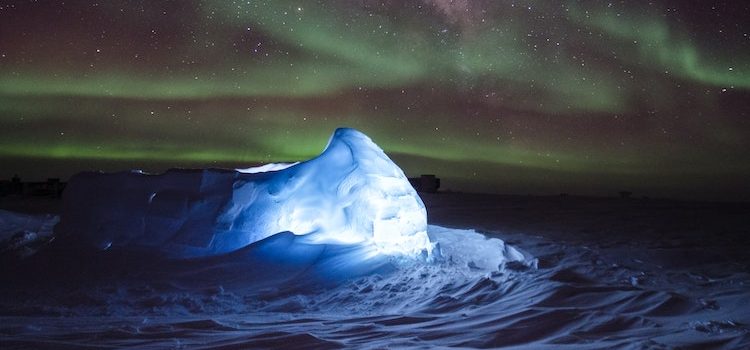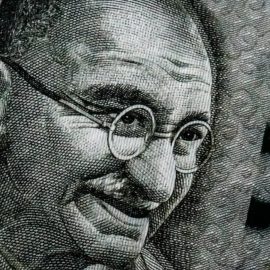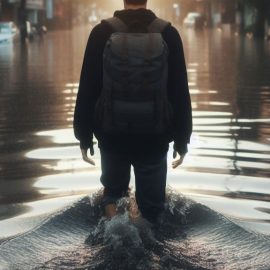

This article is an excerpt from the Shortform book guide to "Merchants of Doubt" by Naomi Oreskes and Erik M. Conway. Shortform has the world's best summaries and analyses of books you should be reading.
Like this article? Sign up for a free trial here .
What is the early history of climate change science? What role did doubt-mongering play?
Addressing climate change involves regulating energy use, the keystone of economic activity. This has made it a target of doubt-mongering—an attempt to discredit the science behind it. Historians Naomi Oreskes and Erik Conway discuss the early debate about climate change science in their book Merchants of Doubt.
Read more to learn about early climate change science and the merchants of doubt.
The Early History of Climate Change Science
Research on atmospheric carbon dioxide (CO2) and its effect on climate started over 150 years ago. In the mid-19th century, experimentalist John Tyndall discovered that CO2 in the air traps heat in the atmosphere. In the early 20th century, geochemist Svante Arrhenius discovered that CO2 emissions from burning fossil fuels could change the planet’s climate. Engineer Guy Callender found evidence that CO2 might already be creating the “greenhouse effect” (the atmosphere acts like a greenhouse, letting heat in but not letting it out).
In the 1950s, chemist Charles David Keeling measured CO2 and found that it had been steadily accumulating in the atmosphere (the data is known as the Keeling Curve). In the 1960s, U.S. scientists brought up the problem with politicians.
Roger Revelle
In 1965, Roger Revelle summarized the possible impacts of the warming caused by CO2. There were still a lot of unknowns, so he focused on sea-level rise because it seemed the most certain. He estimated that by 2000, there could be notable changes in climate because there would be 25% more atmospheric CO2. As the planet warmed, sea ice would increase in size due to thermal expansion (volume increases when material warms up), and this would push water farther inland.
Lyndon Johnson read the report but had bigger problems (such as the Vietnam War) and didn’t do anything about it. The next president, Nixon, did consider atmospheric changes, but he was focused on the greenhouse gas effects of water (from supersonic transports (SSTs)), not CO2.
Drought and Famine
In the 1970s, there was drought in Asia and Africa that caused famine. The famines affected the whole world because the price of food increased globally. This brought some attention to the fragility of the global food supply, which would be affected by changes to weather patterns and global warming.
The Jasons Study
In 1977, the Department of Energy asked the Jasons, an independent, elite scientific group, to review the science on climate and CO2. The Jasons group:
- Confirmed that agriculture was vulnerable to climate change
- Used a model to determine that if atmospheric CO2 concentrations doubled from preindustrial levels, the earth’s average surface temperature would rise by 2.4 degrees Celsius. The poles would warm 10-12 degrees.
Other scientists had already established all this, but the Jasons were highly regarded and their study attracted attention from the White House.
Further Exploration of Climate Change Science
None of the Jasons were climate scientists, so President Carter’s science advisor asked the National Academy of Sciences (NAS) to review their study. The NAS put Jules Charney, an MIT professor and eminent meteorologist, in charge. He put together a panel to review the existing knowledge and additionally invited two climate modelers to share the results of their latest, state-of-the-art climate models. The models had similar results to the Jasons’. They found that doubling the concentration of CO2in the atmosphere would likely increase the surface temperature by three degrees Celsius. (Exactly how much the surface temperature would change as a result of increased CO2 was one of the major uncertainties.)
The panel looked at natural processes that might slow down the warming—for example, if cloud cover increased, clouds would block some sunlight and less heat would make it into the atmosphere to be trapped by CO2. However, they didn’t think any of the natural processes would be enough to prevent warming.
Additionally, none of the complications the models couldn’t capture—like ocean circulation, clouds, or winds—would change the math much. They were factors that would affect the second decimal place of the temperature change, not whether or not the warming was happening at all.
Charney’s panel didn’t know how long it would take to see changes because the models didn’t account for the storage of heat in the oceans. It takes a long time to warm up an ocean, and the time required depends on a variety of factors including how much the oceans mix and how deeply the heat goes. The panel estimated that ocean mixing would hold the warming off for decades—while the atmosphere had already changed, the effects wouldn’t be clear for years.
The MOD’s Response
The White House Office of Science and Technology asked the NAS to keep looking into climate change and answer some of the uncertainties Charney’s work hadn’t, particularly, how far off climate change was. The MODs got involved with both assessments.
1980 Letter Report
In April 1980, a NAS committee chaired by economist Thomas Schelling that included Bill Nierenberg and Roger Revelle submitted a letter report. Schelling’s letter:
- Focused on uncertainties. No one knew much or had really studied the social and political consequences of global warming, and Schelling suggested that the consequences might not all be bad.
- Argued that climate change wouldn’t actually change the climate, just redistribute earth’s climate zones. Humans could migrate or adapt if one region became inhospitable, as they’d historically done. (He did acknowledge that it would be more challenging because we have borders now, but still thought adaptation was the best idea.)
- Predicted that market forces would solve the problem for us. Fossil fuels would become more expensive in the future, which would discourage people from using them and slow down emissions.
- Recommended doing nothing except funding more research—we could learn faster than climate change could take effect.
Carbon Dioxide Assessment Committee
The NAS’s Carbon Dioxide Assessment Committee started on another assessment. Meteorologist John Perry had suggested that the committee review existing work (which was normally what the NAS did), but Bill Nierenberg wanted new research done.
Nierenberg won out and became head of the committee. Energy Department officials didn’t want to hear anything alarming; they just wanted “guidance,” so Nierenberg chose members who would agree with this position.
The report was published in 1983, and unusually for NAS, wasn’t jointly authored. Instead, it was composed of seven individually authored chapters because the committee couldn’t agree on a collective assessment.
Five of the chapters were written by natural scientists and covered the evidence for anthropogenic climate change. They all agreed that humans had increased atmospheric CO2 and that, unless something was done, the increase would continue and have biological and physical consequences. The natural scientists agreed that there was still uncertainty about the details, but we needed to act now.
For example, Revelle’s chapter covered what would happen when the West Antarctic Ice Sheet started to melt. If the temperature increased by 2-3 degrees Celsius, thermal expansion would raise sea level by 70 centimeters. If the sheet disintegrated, sea level could rise five to six meters, which would flood every single port facility in the world as well as low-lying regions like Florida.
The other two chapters were written by economists and covered emissions and impacts. The first chapter, written by William Nordhaus, was about CO2 emissions and energy use in the future. Nordhaus agreed with the natural scientists that anthropogenic CO2 emissions were increasing due to burning fossil fuels, but instead of labeling this a problem, he focused on uncertainty about future effects, and on economic and social consequences. Nordhaus wrote that a permanent carbon tax would be too impractical, there was little to be done about climate change, and the most economical way to “handle” it was inaction.
The last chapter was written by Schelling and rejected the idea that focusing on CO2 was the solution. Schelling insisted that climate change in general (not anthropogenic climate changes specifically) was the issue. Therefore, anything that changed climate (such as natural variability) needed to be considered. He wrote that even if the problem was caused by CO2, the solution might be elsewhere, like adapting.
Schelling also assumed that climate change wouldn’t take effect for over a hundred years, after the policymakers of the day were dead and gone. Future leaders would be able to make better policies than today’s politicians because they would have a better idea of the future society’s needs. For example, today’s humans couldn’t know the energy needs or climate preferences of future humans.
The assessment’s Executive Summary focused on the economists’ chapters, and these chapters were placed first and last. The synthesis was clearly at odds with the rest of the report, but the report was published (one scientist said Academy review was lax at the time).
Criticism of the Report
Some scientists criticized the report, notably physicist Alvin Weinberg, who had been one of the first in his field to realize how dangerous climate change might be. He wrote that there was no evidence to back up the recommended inaction and the synthesis didn’t reflect what most of the report said. Most scientists, however, just ignored the report because they knew it was junk science.
Economists had problems with the report too. In the late 1960s, some economists had concluded that the free market was by nature a danger to the environment because it focuses on growth. The earth doesn’t grow—it has a finite capacity to absorb pollution and a finite amount of resources.
White House Response to the Report
The White House approved of the report and used it to refute other reports (such as two Environmental Protection Agency ones) that recommended action. It was exactly what they wanted—it appeared united, encouraged inaction, and said that future technology would handle anything that did come up.
The press prioritized the National Academy of Sciences (NAS) report.
Further Exploration of Climate Change Science
In 1987 (not much happened on climate change while atmospheric scientists were busy with the ozone hole), climate modeler James E. Hansen testified in a climate hearing. The media ignored him. However, in 1988, there were high temperatures and drought in the U.S. and the public started to take global warming more seriously. Hansen re-testified in 1988 and announced that anthropogenic global warming had already started.
New research showed that over the past eight years, the planet was half a degree warmer than the 1950-1980 average, and there was only a 1% chance that this was due to natural events. Hansen and his colleagues also modeled some scenarios for the future: The surface temperatures could be higher than they’d been 120,000 years ago.
This time, Hansen got media attention. He was on the front page of the New York Times. Some scientists, who didn’t like the attention or were perhaps jealous, criticized him because there were still uncertainties and it seemed premature to announce warming was already happening.
Policy and Public Action
Hansen created political pressure and presidential candidate George H.W. Bush promised to do something about climate change. Bush would propose funding research and send people to climate change science meetings.
Further Exploration of Climate Change Science
In 1988, Bob Watson and Bert Bolin put together the International Panel on Climate Change (IPCC). The panel was to involve over 300 scientists and complete an assessment by 1990.
Bolin divided the panel into three groups: one to report on climate change science, one to look at the impacts, and one to figure out what to do about it.
The MOD’s Response
In 1989, the MODs tried to blame global warming on the sun’s variability. The Marshall Institute (Jastrow, Nierenberg, and Seitz) put out a report that claimed that the warming didn’t line up with the increase in CO2. There was warming before 1940 (before significant emissions), cooling from 1940-1975, and then more warming. Atmospheric CO2, on the other hand, had continually increased. Since the trends didn’t match, CO2 couldn’t be the cause.
To support this, the report included one of Hansen’s diagrams, which plotted CO2 against temperature. The lines didn’t match up particularly well, but that was because the MODs had only included part of the diagram. The full diagram was multiple graphs that plotted the effects of CO2, the sun, and volcanoes against temperature. Because all these factors affect surface temperatures, all of them had to be considered, and when they were, the temperature did line up.
The paper claimed the “real” cause of temperature changes was the sun, which went through periods of higher and lower output. There was a 200-year-cycle, and it was just about finished, so things would cool down soon. The Marshall Institute piece didn’t mention the fact that the sun’s energy output hadn’t increased in the 1970s, so there was no way that the warming period had been caused by the sun (changes in sun output did happen in the other warming period in the 1940s).
There was another large flaw in this argument—the changes in solar output were small, so if they’d affected climate, the climate must be very sensitive. If it was very sensitive, small changes in atmospheric CO2 could cause large changes to surface temperatures too.
The Institute asked to present their work to the White House, were approved, and Nierenberg gave a briefing. Many politicians took it seriously. Bert Bolin wasn’t invited or didn’t realize he had to ask.
Further Exploration of Climate Change Science
The International Panel on Climate Change (IPCC) published their First Assessment in May 1990. It:
- Confirmed that unless fossil fuel burning was regulated, warming would increase. It would create a climate and environment humans had never been exposed to before.
- Addressed and refuted the Marshall Institute’s work—greenhouse gases had a much bigger effect than solar variability on climate.
The MOD’s Response
The merchants of doubt continued to plug their sun theory and attack the IPCC, but they also started going after individual scientists, including Roger Revelle.
We must look at both climate change science and the response by the merchants of doubt to fully understand the climate change debate over the years.

———End of Preview———
Like what you just read? Read the rest of the world's best book summary and analysis of Naomi Oreskes and Erik M. Conway's "Merchants of Doubt" at Shortform .
Here's what you'll find in our full Merchants of Doubt summary :
- How doubt-mongering techniques are used to discredit those who threaten a person or company's agenda
- The 10 most common doubt-mongering techniques
- Steps you can take to protect yourself from doubt-mongering






